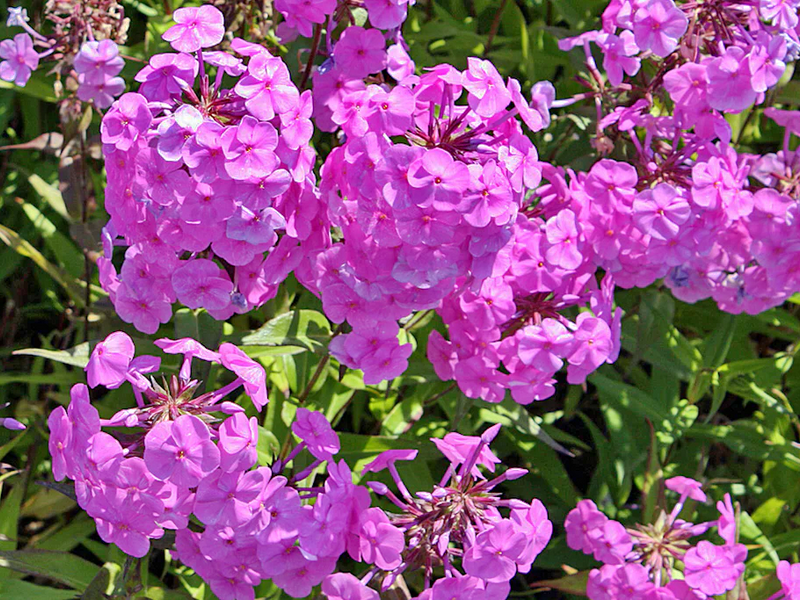Wild Sweet William
Phlox maculata
Click here to download a PDF of this plant information page (for printing).

Sun Exposure: Sun, Part Sun
Season of Interest: Summer, Early Fall
Bloom Time: June - August
Bloom Color: White to Purple
Height: 24 to 36 in.
Spread: 12 to 20 in.
Spacing: 24 in.
Water Needs: Average
Maintenance: Deadhead
Soil Type: Clay, Loam, Sandy
Soil pH: Acidic, Neutral
Soil Drainage: Well drained
Pests: Spider mites
Diseases: Powdery mildew, Root rot
Wildlife: Bees, Butterflies, Hummingbirds

Description:
Wild Sweet William is a clump-forming, rhizomatous perennial with large flower clusters, up to 8 in. across, densely packed with sweetly-aromatic, tubular, pinkish-purple flowers in late spring to early fall. Blooming for about 4-8 weeks, the showy blossoms attract butterflies, moths and hummingbirds. Songbirds will eat the seeds. The flowers are borne atop strong, upright, red-spotted stems clad with leathery, finely-toothed, lance-shaped, dark green leaves, 5 in. long. Noted for its excellent resistance to powdery mildew and root rot, Wild Sweet William is a fine choice for the perennial border, cottage garden, wildflower meadow or native plant garden. Plant in drifts for great impact and make sure you have enough for cutting. This plant is often planted together with Black-Eyed Susan (plants.ces.ncsu.edu/plants/phlox-maculata
Care and Growing Tips:
Grows up to 2-3 ft. tall and 1-2 ft. wide. It will slowly spread by rhizomes and self-seeding to form large colonies. It performs best in moist well-drained soils but is intolerant of drought. Provide a summer mulch to keep the root zones cool. This plant is an excellent choice for cottage gardens, prairies , meadows, and native plant gardens. Keep an eye out for spider mites. Provide good air circulation to prevent powdery mildew issues. Avoid overhead watering. Deer resistant. Deadhead to preserve a neat appearance and promote new blooms.